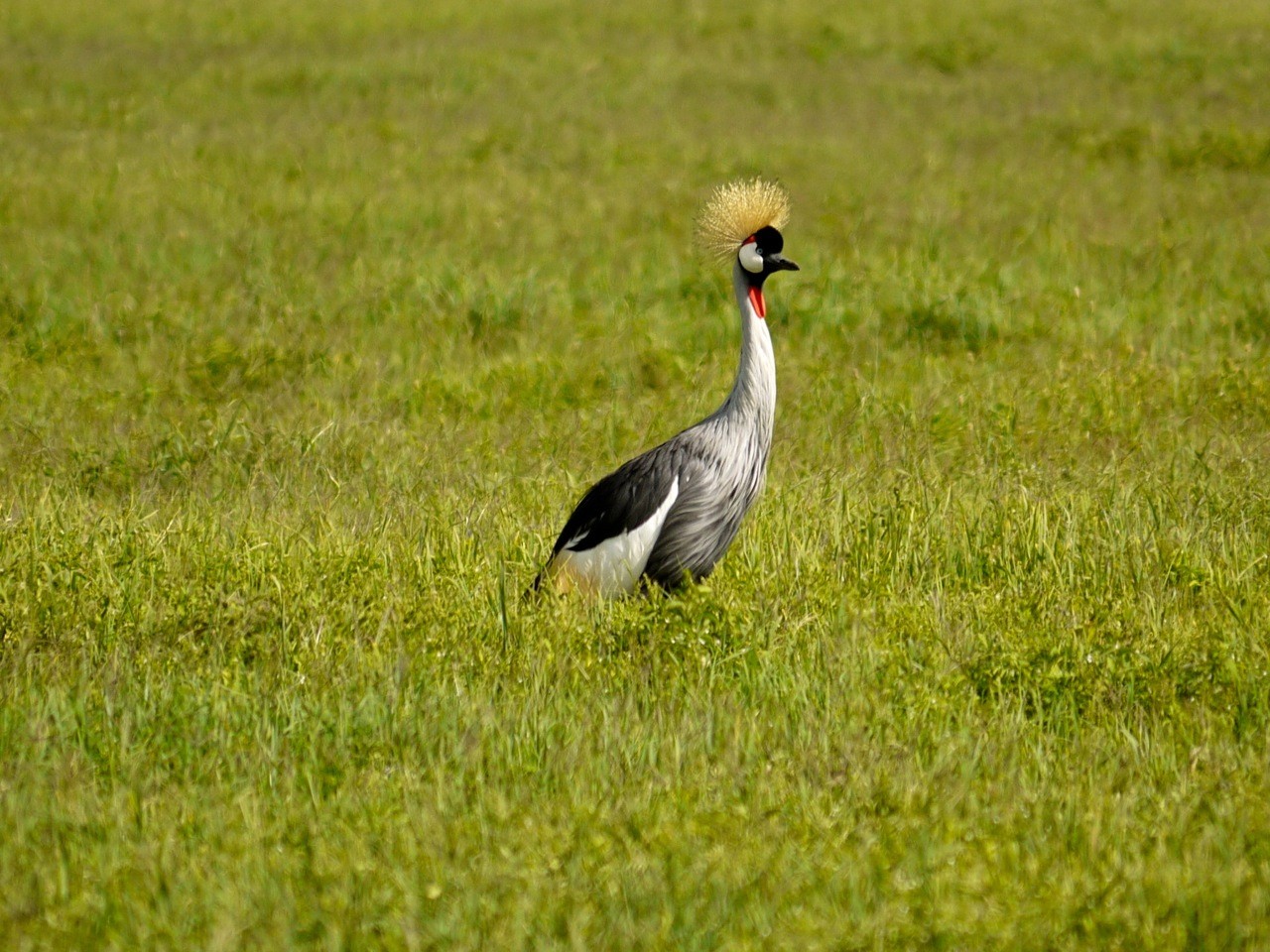Grey Crowned Crane
A species of Crowned-cranes, Also known as East African Grey Crowned Crane, South African Crowned Crane Scientific name : Balearica regulorum Genus : Crowned-cranes
Grey Crowned Crane, A species of Crowned-cranes
Also known as:
East African Grey Crowned Crane, South African Crowned Crane
Botanical name: Balearica regulorum
Genus: Crowned-cranes
Content
Description People often ask General Info
Description
The grey Crowned Crane is a majestic bird known for its striking appearance and elaborate courtship displays. It inhabits grasslands and wetlands in Africa and is omnivorous, feeding on a variety of plants and animals. The species is distinctive for its striking golden crown and elaborate courtship dance, during which pairs leap into the air and make deep, booming calls. The Grey Crowned Crane is an important symbol in many African cultures and is considered a symbol of good luck and longevity. 
Size
1.1 m
Colors
Brown
Black
Yellow
Gray
White
Life Expectancy
20 years
Nest Placement
Ground
Feeding Habits
Grey Crowned Crane are omnivorous, consuming plants, seeds, insects, and small animals. They exhibit unique foraging by foot-stamping to flush prey and follow herbivores to catch disturbed prey. Feeding occurs throughout the day.
Habitat
Grey Crowned Crane thrives in diverse habitats ranging from dry savannahs to wetlands across Sub-Saharan Africa. The species prefers environments like marshes, grasslands, and flatlands adjacent to water bodies. In East Africa, grey Crowned Crane often inhabits human-altered landscapes such as pastures, croplands, and irrigated regions. Meanwhile, in Southern Africa, they frequent marshes within grassland and savanna terrains as well as agricultural areas. Notably, grey Crowned Crane is capable of roosting in water, trees, or on utility structures, showcasing its adaptation to both natural and modified environments.
Dite type
Omnivorous
People often ask
General Info
Feeding Habits
Bird food type
Behavior
The grey crowned crane has a breeding display involving dancing, bowing, and jumping. It has a booming call which involves inflation of the red gular sac. It also makes a honking sound quite different from the trumpeting of other crane species. Both sexes dance, and immature birds join the adults. Dancing is an integral part of courtship, but also may be done at any time of the year. Flocks of 30–150 birds are not uncommon. 
Distribution Area
It occurs in dry savannah in Sub-Saharan Africa, although it nests in somewhat wetter habitats. They can also be found in marshes, cultivated lands and grassy flatlands near rivers and lakes in Uganda and Kenya and as far south as South Africa. This animal does not have set migration patterns, and birds nearer the tropics are typically sedentary. Birds in more arid areas, particularly Namibia, make localised seasonal movements during drier periods. 
Species Status
Although the grey crowned crane remains common over some of its range, it faces threats to its habitat due to drainage, overgrazing, and pesticide pollution. Their global population is estimated to be between 58,000 and 77,000 individuals. In 2012 it was uplisted from vulnerable to endangered by the IUCN. 
